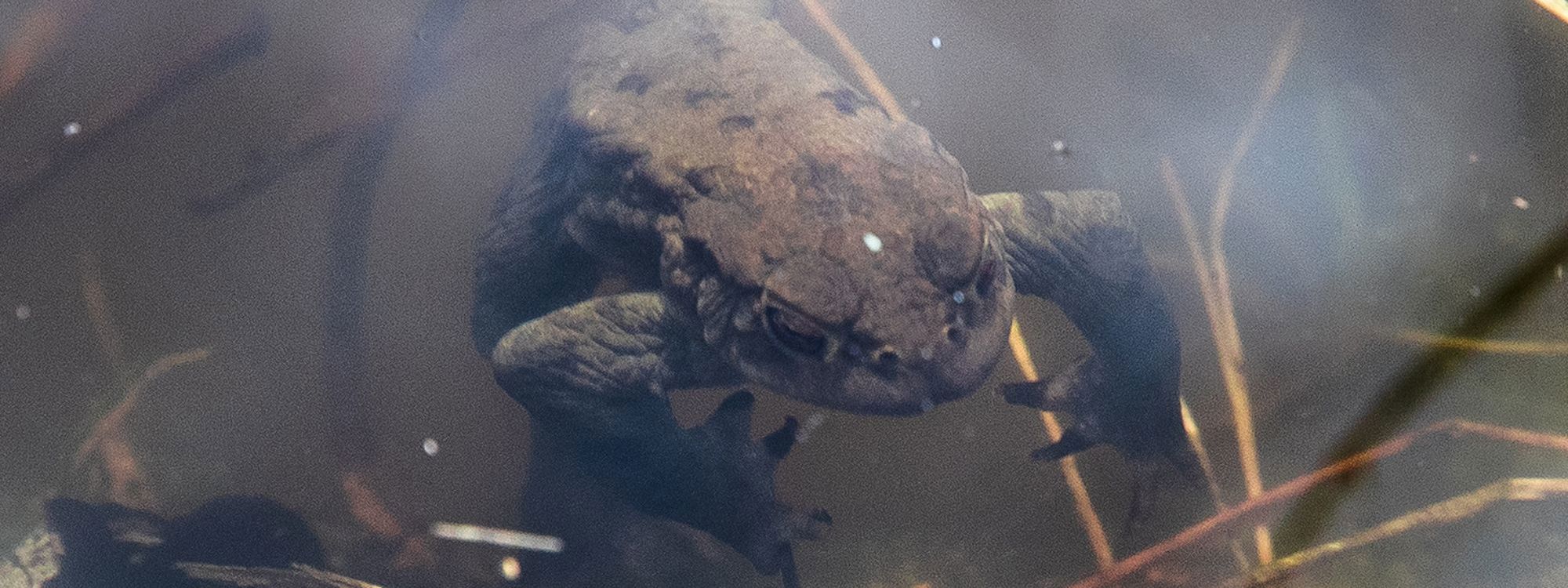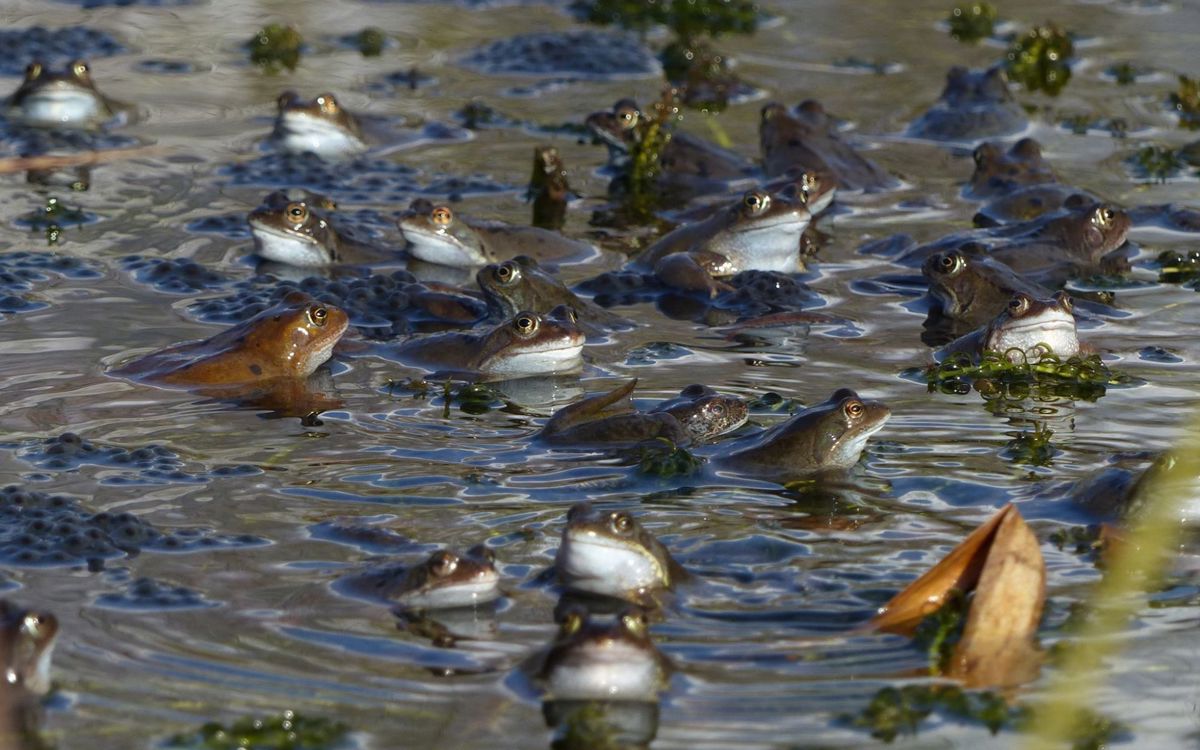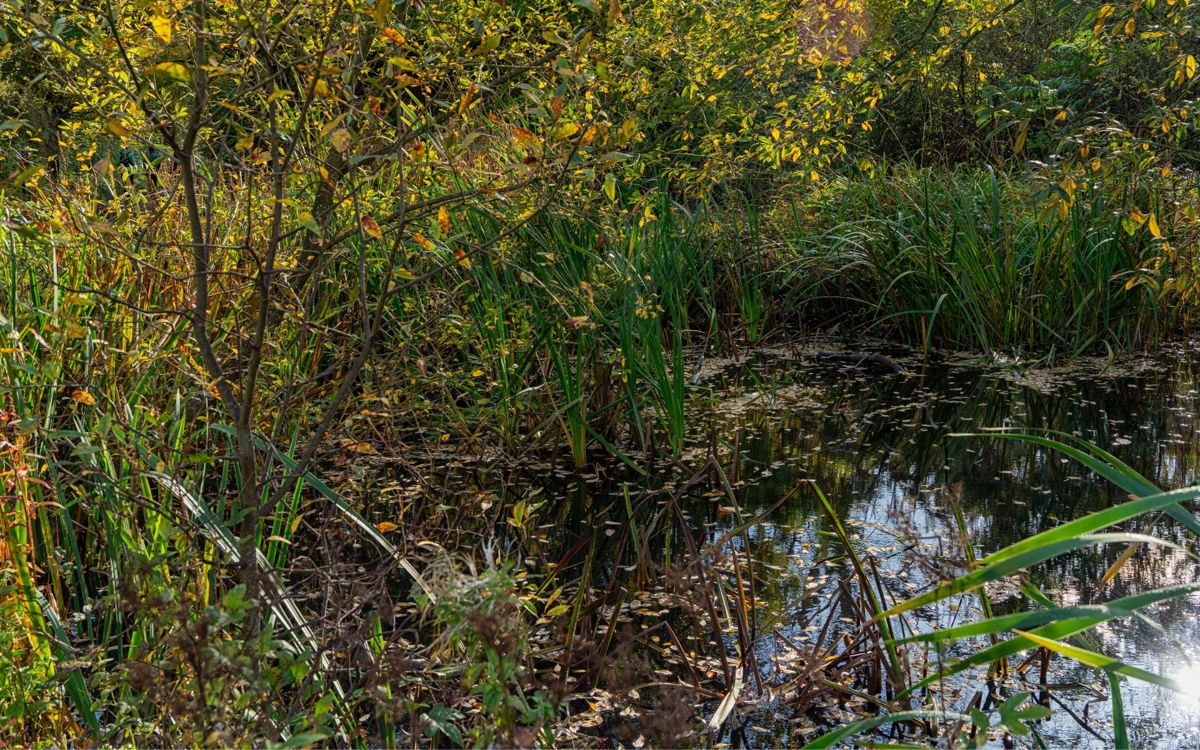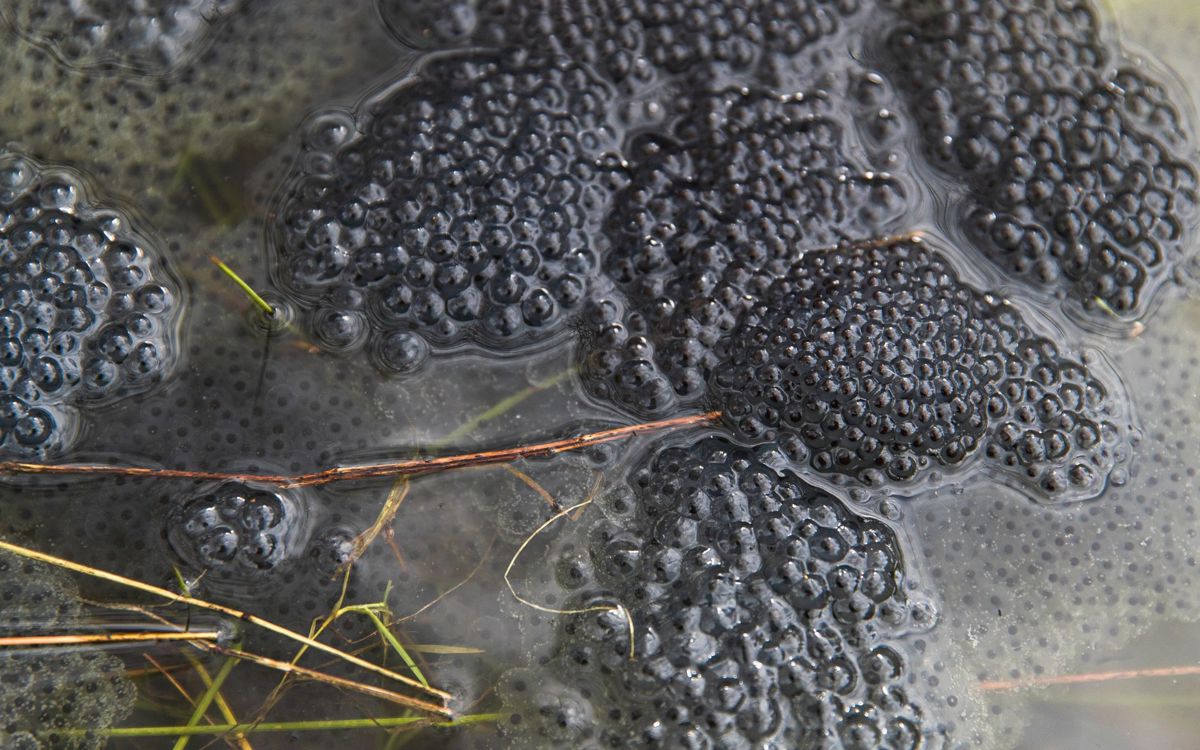
The ponds in our parks provide important habitats for frogs and toads.

As temperatures steadily rise at the start of spring, our native amphibian species begin to stir and awaken from their winter torpor. Common frogs are usually the first to appear back at their breeding ponds and if you have a pond in your garden or local park, you may already have spotted adult frogs there. The first clumps of frogspawn generally appear during the month of February and by early March large masses of spawn will be evident in ponds across the city. Common Toads (which are far less common than in former times) are generally a few weeks behind frogs. They can migrate some distance from their winter quarters to their natal ponds and unlike frogs, spend a relatively short time in the water – perhaps just 2-3 weeks.
Huge aggregations of mating toads can be seen in our ponds by the Visitor Centre at Howe Park Wood, a Site of Special Scientific Interest (SSSI) – quite a spectacle. The water bubbles with activity whilst some of the animals are preyed upon by herons and crows. However, usually by mid-March long strings or ribbons of toad spawn can be seen attached to the vegetation at the pond margins.
Photo credit: Harry Appleyard

Globally, amphibians – and particularly frogs and toads – are in grave danger. A number of fungal diseases and viruses are decimating the populations of these animals, particularly in the tropics but increasingly in Europe as well. Ranavirus is an especially virulent disease which affects our native frogs and with the climate warming, it is likely that more diseases will enter our UK populations over time. Another serious threat to amphibians is the loss of ponds across the landscape, often lost to development or sometimes filled in as unwanted farmland ponds. Both The Parks Trust and MK Council are currently working with the Newt Conservation Partnership to create new ponds in local parks, primarily to create breeding habitat for the protected Great Crested Newt. But these ponds will also provide additional habitat for frogs, toads and a huge diversity of invertebrates and plants.

Frogs and toads lay large numbers of eggs as a natural way to ensure the survival of some of their offspring. It’s estimated that around one in fifty of the eggs laid in the pond will actually make it out of the pond as a froglet or toadlet. The rest will be eaten by pond predators such as newts, as well as dragonfly and beetle larvae.
They will often return to the pond where they were spawned to breed themselves. This is why it is best to leave tadpoles in their natural habitat. If they remain close to the pond they were spawned in, they don’t have to make the long, dangerous and sometimes deadly journey across footpaths, fields and roads to return to their birth pond for the breeding season.
Given that only a small number will survive and that of those only a handful will make it to adulthood, it is really important to leave the tadpoles in our ponds. Please do not take spawn, tadpoles or amphibians from our ponds. By taking them to a different pond, you may unknowingly cause a negative impact on the ecosystem in that area. You may be spreading diseases between locations and can also encourage the spread of invasive pond plant species.
